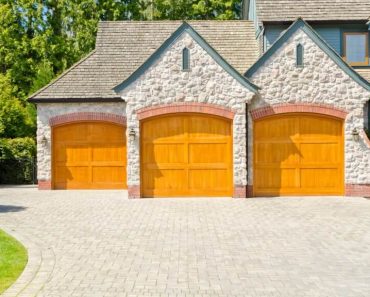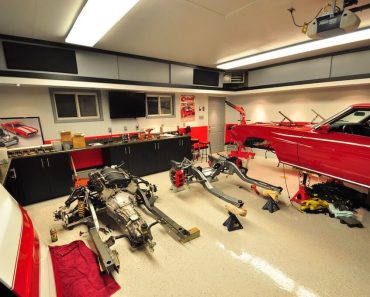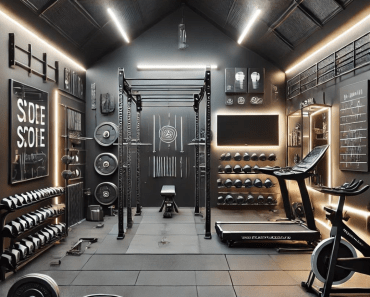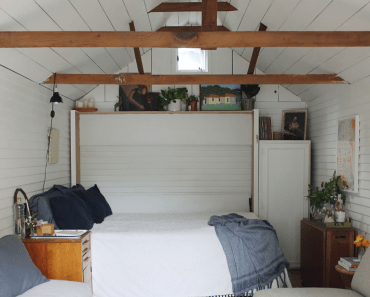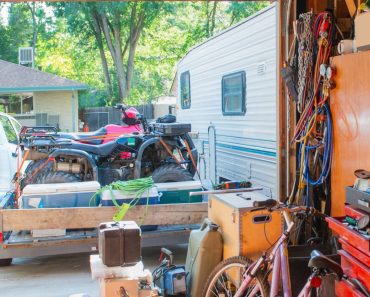Building and organizing a firewood shed is a rewarding project that ensures you have a steady supply of dry, seasoned firewood all year round. Whether you’re a seasoned DIY enthusiast or a beginner, this comprehensive guide will walk you through every step of the process. From selecting the right location to organizing your firewood efficiently, we’ve got you covered.

Choosing the Perfect Location for Your Firewood Shed
Selecting the ideal spot for your firewood shed is crucial. You want a location that is both convenient and functional.
Accessibility
Your firewood shed should be easily accessible from your house, especially during the colder months when you’ll need to retrieve wood frequently. Choose a location that’s close to your home but not so close that it poses a fire hazard. A shed that’s too far away can become a hassle, especially in bad weather.
Dry and Elevated
Ensure the location is dry and elevated. This helps prevent moisture from seeping into your woodpile, which can cause rot and attract pests. Avoid low-lying areas where water might collect and always ensure there is good drainage.
Wind and Sun Exposure
Maximize sun exposure to help dry the wood faster. A location that receives ample sunlight and has good air circulation is ideal. Consider the prevailing wind direction and place your shed where the wind can help dry your wood naturally.
Designing Your Firewood Shed
Designing your firewood shed requires careful planning to ensure it meets all your needs.
Size and Capacity
Determine how much firewood you need to store. A typical cord of wood measures 4 feet high by 4 feet wide by 8 feet long. Consider how many cords you need for a season and design your shed accordingly. A larger shed might require additional support structures to handle the weight of the wood.
Roof and Siding
Your firewood shed needs a sturdy roof to protect your wood from the elements. A sloped roof is ideal for shedding rain and snow. Use durable materials like metal or asphalt shingles. For siding, consider using treated lumber that resists rot and insect damage.
Ventilation
Proper ventilation is essential to allow air to circulate and keep your firewood dry. Incorporate gaps between the boards or use wire mesh to create ventilation slots. This helps prevent mold and mildew from developing on your wood.
Building the Foundation
A solid foundation is crucial for the stability and longevity of your firewood shed.
Types of Foundations
You have several options for your shed’s foundation, including concrete piers, gravel pads, and wooden skids. Each has its advantages and disadvantages:
- Concrete Piers: These provide a stable and permanent foundation. They’re ideal for larger sheds but require more labor and materials.
- Gravel Pads: A gravel pad is easy to construct and provides good drainage. It’s suitable for smaller sheds and can be built quickly.
- Wooden Skids: These are great for temporary or movable sheds. They offer flexibility but may not be as durable as other options.
Construction Steps
- Prepare the Site: Clear the area of vegetation and debris. Level the ground if necessary.
- Install the Foundation: Depending on your chosen foundation type, follow the appropriate steps to lay down the base. Ensure it’s level and properly aligned.
Framing the Shed
Framing is the backbone of your firewood shed, providing structure and support.
Materials Needed
- Pressure-treated lumber
- Nails or screws
- Metal brackets
Step-by-Step Process
- Build the Base: Construct the base frame using pressure-treated lumber. This will support the weight of the firewood and provide a sturdy foundation.
- Construct the Walls: Erect the side walls and secure them to the base. Use metal brackets for additional support at the corners.
- Add the Roof Supports: Install the roof supports and ensure they are securely attached to the walls.
Adding the Roof
The roof is a critical component, protecting your firewood from rain, snow, and sun.
Materials and Tools
- Roofing material (metal or shingles)
- Roofing nails or screws
- Hammer or screwdriver
Installation Steps
- Install the Roof Decking: Attach plywood or other suitable material to the roof supports.
- Lay Down the Roofing Material: Starting at the bottom edge, lay down your roofing material, overlapping each layer to ensure water runoff. Secure with nails or screws.
Organizing Your Firewood Shed
Organizing your firewood shed efficiently can save you time and effort when accessing your wood.
Stacking Techniques
Proper stacking techniques can maximize space and promote airflow. Stack wood in rows, leaving gaps between the logs. Crisscross the ends for stability.
Shelving and Storage
Consider adding shelves or bins for storing kindling and smaller pieces of wood. This keeps your shed organized and makes it easier to find what you need.
Rotating Stock
Use the first-in, first-out method to ensure older wood is used first. This helps maintain a steady supply of seasoned wood and prevents newer wood from sitting too long.
Maintenance Tips for Your Firewood Shed
Regular maintenance can extend the life of your firewood shed and keep it in top condition.
Inspect Regularly
Inspect your shed regularly for signs of damage, such as rot or insect infestation. Address any issues promptly to prevent further damage.
Clean and Clear
Keep the area around your shed clean and clear of debris. Remove any leaves, branches, or other materials that could trap moisture against the shed.
Reapply Protective Coatings
Reapply any protective coatings, such as paint or sealant, as needed. This helps protect the wood from the elements and prolongs the life of your shed.
Common Mistakes to Avoid
Avoiding common mistakes can save you time, money, and frustration in the long run.
Poor Location
Choosing a poor location can lead to water damage and inconvenience. Ensure your shed is in a dry, accessible, and well-ventilated area.
Inadequate Ventilation
Without proper ventilation, your firewood can become damp and moldy. Incorporate enough ventilation to allow air to circulate freely.
Weak Foundation
A weak foundation can cause your shed to shift or collapse. Invest in a solid foundation to ensure the stability and longevity of your shed.
Cost Breakdown and Budgeting
Understanding the costs involved can help you budget effectively for your firewood shed project.
Materials Cost Table
| Material | Estimated Cost | Notes |
|---|---|---|
| Pressure-treated lumber | $500-$1000 | Varies based on shed size |
| Roofing materials | $200-$500 | Metal or shingles |
| Foundation materials | $100-$300 | Gravel, concrete, or wood |
| Nails and screws | $50-$100 | |
| Ventilation materials | $50-$100 | Wire mesh or ventilation slots |
Labor and Additional Costs
- Labor: If hiring professionals, labor costs can add $500-$1000 to your budget.
- Tools: Ensure you have all necessary tools, or include rental/purchase costs.
Important Note: “Investing in quality materials upfront can save you from costly repairs down the line.”
Conclusion
Building and organizing a firewood shed is a practical and fulfilling project that ensures you have a reliable supply of dry firewood. By following these steps, from selecting the perfect location to maintaining your shed, you can create a durable and efficient storage solution. Remember, proper planning and execution are key to a successful firewood shed. Happy building!
